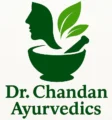Section 1: Global and Domestic Demand
Vitex negundo L., known as Nirgundi in Ayurveda, is a widely utilized medicinal plant with growing commercial importance. Its leaves, roots, seeds, and bark are used in various formulations globally. The increasing preference for plant-based therapeutics in the wellness and pharma industry has fueled a steady rise in demand.
- Global Market: Widely used in traditional medicine in China, Philippines, Sri Lanka, and recently in nutraceuticals across the U.S. and Europe. Global export market for Ayurvedic plants including Nirgundi exceeds $450 million (2022).
- Domestic Demand: Featured in over 60 classical Ayurvedic formulations and used in more than 100 proprietary drugs in India. Estimated annual demand: 2,500–3,000 metric tons (NMPB, 2023).
Section 2: Historical Significance and Folklore
Nirgundi is often associated with Shiva worship and the Shaiva tradition in India. Its branches are considered sacred and used in protective rituals.
- Folklore: In South Indian villages, there’s a saying — “Nirgundi ke tale soya, dard bhag gaya” (Sleep under a Nirgundi tree and your pain will disappear).
- Mythological References: The Mahabharata refers to its use in wound healing. In Sri Lanka, monks used it as an insect-repellent bedding during meditation.
Section 3: Botanical Description
- Family: Verbenaceae
- Synonyms: Vitex trifolia, Five-leaved chaste tree
- Habitat: Grows wild in riverbanks, forest margins, and dry wastelands across tropical Asia.
- Morphology:
- Shrub or small tree, height: 2–5 meters.
- Leaves: Palmately compound with 3–5 leaflets, aromatic.
- Flowers: Bluish-purple, in terminal panicles.
- Fruits: Small, black drupe.
Section 4: Ayurvedic Description
- Rasa: Tikta (bitter), Katu (pungent)
- Guna: Laghu (light), Ruksha (dry)
- Virya: Ushna (hot potency)
- Vipaka: Katu
- Dosha Affinity: Balances Vata and Kapha
- Classical Indications:
- Shotha (Inflammation)
- Sandhivata (Arthritis)
- Kasa (Cough), Shwasa (Asthma)
- Krimi (Parasitic infestations)
Section 5: System-Wise Inclusion
- Ayurveda: Part of the Essential Drug List (EDL) in oils like Nirgundi Taila and Dashmool Taila.
- Siddha: Used in Karpam, Thylam for joint pains.
- Unani: Known as Sambhalu, used in Dard-e-Mafasil and Huzaz disorders.
- Homeopathy: Used as tincture for liver and spleen conditions.
- Sowa-Rigpa: Indicated in respiratory and musculoskeletal formulations.
Section 6: Pharmacological Properties
- Anti-inflammatory & Analgesic: Effective in arthritic and musculoskeletal disorders.
- Antimicrobial & Antiviral: Inhibits growth of E. coli, Staphylococcus aureus, and HSV virus.
- Hepatoprotective: Shown to support liver function in rat models.
- Wound Healing: Enhances fibroblast proliferation and collagen deposition.
Section 7: Phytochemistry
- Key Constituents: Flavonoids (casticin, isoorientin), Iridoid glycosides, Alkaloids, Essential oils (eucalyptol).
- Pharmacodynamics:
- Casticin: Anti-inflammatory.
- Flavonoids: Antioxidant.
- Iridoids: Immunomodulatory.
- Regulatory Status:
- India: Licensed under AYUSH and Food Supplement categories.
- USA: Sold as dietary supplement.
- EU: Listed in herbal monographs by EMA.
Section 8: Therapeutic Applications
- Musculoskeletal: Arthritis, backache, sprains.
- Respiratory: Asthma, bronchitis.
- Skin: Eczema, wounds, boils.
- Gynecology: Dysmenorrhea, postpartum care.
- Neurology: Vata-related disorders, headaches.
Section 9: Herb-Herb and Inter-Drug Interactions
- Synergistic Herbs: Dashmoola, Shallaki, Guggulu.
- Contraindications: Avoid in Pitta-dominant skin disorders unless combined with coolant herbs.
- Drug Interactions: Caution advised with NSAIDs and anticoagulants due to potentiation.
Section 10: Cultivation Practices and Cultivars
- Propagation: Stem cuttings, seeds.
- Soil Preference: Sandy loam, pH 6.5–7.5.
- Climatic Conditions: Tropical, 700–1200 mm rainfall.
- Harvesting: Leaves (6 months), roots (2 years).
- Cultivars:
- ‘NIR-1’ developed by CIMAP, Lucknow – high leaf biomass.
- ‘HerbGreen-3’ developed by IHBT, Palampur – suited for cold climates.
Section 11: Socio-Economic Value and Market Potential
- Agro-Economics (Per Acre):
- Input Cost: ₹20,000
- Yield: 1.5–2.0 MT dried leaves
- Selling Price: ₹30–40/kg
- Net Income: ₹40,000–60,000/year
- Market Trends:
- Used in over 200 Ayurvedic OTC products.
- Rising demand in pain relief and aromatherapy segments.
- Export Opportunities: USA, Germany, Sri Lanka.
Section 12: Relevance in Sustainable Health Systems
- Home-Based Formulations:
- Nirgundi Leaf Oil: For joint pain relief.
- Steam Inhalation: Boil leaves for respiratory congestion.
- Sustainable Use: Cultivable in community gardens, bio-fencing, and agroforestry.
- Low Toxicity Profile: Safe in topical and oral use with minimal side effects.
Section 13: Entrepreneurship and Employment Potential
- Micro-Enterprises:
- Leaf Powder Capsules
- Pain Relief Balms
- Herbal Teas & Sachets
- Women SHGs and Youth Startups:
- Herbal soap-making
- Eco-friendly mosquito repellents
- Employment Generation:
- Nursery raising, organic cultivation, supply chain (drying, packaging).
- Rural entrepreneurs
Section 14: Conservation Status
- IUCN Red List: Listed as “Least Concern”
- Local Threats: Overharvesting in Central India, habitat degradation
- Conservation Programs:
- In-situ: Medicinal Plant Conservation Areas (MPCAs)
- Ex-situ: Herbal Gardens under NMPB
- Inclusion in PBR (People’s Biodiversity Registers)
Section 15: Case Studies
- Kangra, Himachal Pradesh: Women-led SHG produces and markets Nirgundi Taila, earning ₹70,000/acre/year.
- Bastar, Chhattisgarh: Tribal communities selling Nirgundi poultices under NGO-supported cooperative brand.
Section 16: Conclusion and Recommendations
Conclusion
Nirgundi represents the best of traditional wisdom and modern relevance. From scriptures to scientific journals, it is a trusted ally in holistic health and socio-economic development.
Recommendations
- Include in Ayurveda’s NLEM.
- Promote research on phytopharmaceutical potential.
- Support FPOs and SHGs for value chain development.
- Encourage sustainable cultivation via MGNREGA and agroforestry.
- Disseminate knowledge through digital and folk media.
“Let Nirgundi heal, from roots to roof, from tradition to tomorrow.”
